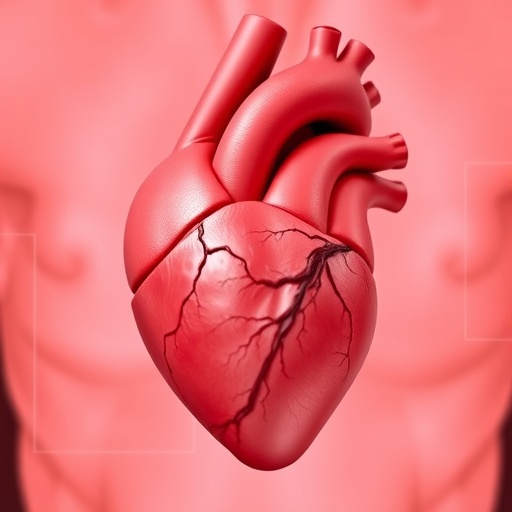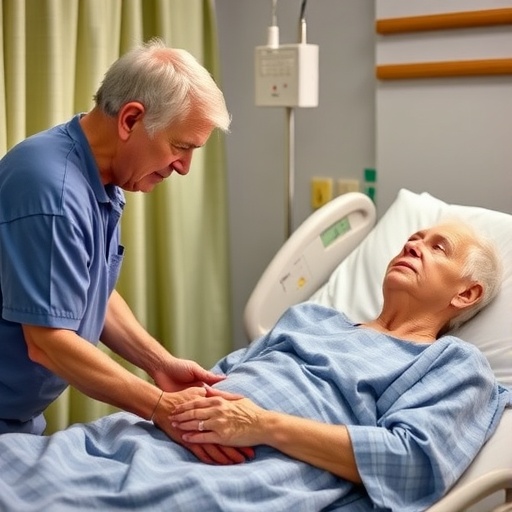In a groundbreaking study published in Nature, researchers have unveiled a sophisticated functional genomics strategy that unravels the molecular underpinnings of congenital heart defects (CHDs) in Down syndrome (DS), focusing on the enigmatic role of the epigenetic regulator HMGN1. By leveraging single-cell RNA sequencing (scRNA-seq) alongside CRISPR activation (CRISPRa), the team overcame formidable technical barriers to model the gene dosage effects typical of trisomy 21, providing unprecedented insight into cardiac developmental abnormalities in DS.
One of the principal challenges addressed in this research was mimicking the physiological gene overexpression seen in trisomy 21. Typical transgenic methods have often struggled to replicate the subtle but critical increases in gene expression caused by an extra chromosome copy. Here, CRISPRa technology was fine-tuned to achieve expression levels that closely parallel those found in DS hearts. This breakthrough allowed for a more accurate elucidation of candidate dosage-sensitive genes on chromosome 21 that are instrumental in heart formation and function.
Through careful, systematic evaluation of chromosome 21 genes, the researchers identified HMGN1 as a pivotal epigenetic regulator whose upregulation causes a significant phenotypic shift in atrioventricular canal myocardium (AVCM). Normally, AVCMs possess specialized properties essential for proper cardiac valve and septal development. However, in the presence of increased HMGN1 expression, these cells began to adopt characteristics more akin to ventricular myocardium cells, resembling the changes observed in trisomy 21 hearts. This myocardial reprogramming suggests a cellular mis-specification that could underpin structural heart defects in DS.
Further solidifying their findings, genetic experiments in a mouse model of DS demonstrated that normalization of Hmgn1 gene dosage—from three copies back to the normal two—ameliorated the aberrant gene expression patterns in AVCMs. Crucially, this genetic correction also led to a reduction in the incidence of congenital cardiac anomalies, highlighting HMGN1 as a causal factor rather than merely a correlative marker. This illustrates the power of targeted gene dosage interventions in mitigating developmental pathologies linked to chromosomal abnormalities.
Epigenetic regulation, previously underappreciated in the context of DS-associated CHDs, emerges as a critical mechanism in this study. HMGN1, known for modulating chromatin state and interacting with cell-type-specific transcription factors, appears to orchestrate a complex gene regulatory network influencing AVCM identity. The team’s data revealed that HMGN1 binds proximally to key AVCM regulatory genes such as TBX2 and TBX20. Through these interactions, HMGN1 likely exerts direct control over gene expression programs essential to forming the specialized AVCM lineage and ensuring normal valve and septal morphogenesis.
Despite these revelations, challenges remain in precisely delineating the temporal effects of HMGN1 dosage during cardiomyocyte differentiation. The researchers acknowledge technical difficulties in applying CRISPR perturbations dynamically in vitro, as gene silencing phenomena can confound interpretations. Nonetheless, their statistical frameworks for prioritizing candidate genes based on scRNA-seq and CRISPR data represent robust tools that could transform future genetic screens in cardiovascular biology and beyond.
This study also situates HMGN1 within a broader landscape of trisomy 21 genetics influencing heart development. Prior research implicates other loci, notably DYRK1A and an interferon gene cluster, in modulating CHD penetrance in DS models. The emerging narrative is one of multigenic interaction, where the duplicated dosage of multiple genes synergizes to disrupt the finely tuned cardiac developmental program. Understanding how these loci intersect, especially within cell-type-specific contexts like AVCMs or through cross-talk with endocardial and mesenchymal cells, constitutes a frontier for ongoing investigations.
Compellingly, partial trisomy cases in humans reinforce the significance of the chromosome 21 region containing HMGN1 and DYRK1A, correlating with CHD susceptibility. While causality and mechanistic complexities remain to be fully unraveled, these genetic coincidences underscore the multifactorial architecture of congenital heart defects in DS. Importantly, the authors highlight that chromosomal duplications may nonlinearly influence neighboring gene regulation, adding an additional layer of epigenetic modulation to disease etiology.
The implications of discovering HMGN1 as a key driver of congenital cardiac abnormalities in DS extend beyond the immediate genetic context. It reveals an essential role for chromatin remodeling factors in direct myocardial reprogramming during heart development. This conceptual advance reshapes the framework for studying how epigenetic regulators contribute to human developmental disorders driven by aneuploidy. It also opens avenues for exploring epigenetic therapeutic targets that could modulate gene dosage effects in trisomy conditions.
Future research will be pivotal in dissecting whether HMGN1 overexpression is sufficient on its own to cause increased CHD penetrance or whether it acts synergistically with other chromosome 21 genes and extrinsic cellular signals. Moreover, understanding how HMGN1 dosage influences communication networks between cardiomyocytes and other heart cell types will provide a more integrated picture of cardiac morphogenesis defects in DS. As such, this study lays critical groundwork for subsequent translational efforts aimed at precision medicine interventions for congenital heart disease.
In conclusion, this innovative genomic study marks a transformative step in our understanding of Down syndrome–associated congenital heart defects. By coupling state-of-the-art single-cell transcriptomics with precision gene activation technologies, the research identifies HMGN1 as a master regulator reprogramming myocardium cell identity and precipitating developmental cardiac anomalies. These findings spotlight the intricate molecular choreography disrupted by trisomy 21 and pave the way for refined genetic and epigenetic therapeutic strategies to improve outcomes for individuals with DS.
Subject of Research:
The study investigates the role of HMGN1 gene dosage in myocardial cell reprogramming and its contribution to congenital heart defects in trisomy 21 (Down syndrome).
Article Title:
Myocardial reprogramming by HMGN1 underlies heart defects in trisomy 21.
Article References:
Ranade, S.S., Li, F., Whalen, S. et al. Myocardial reprogramming by HMGN1 underlies heart defects in trisomy 21. Nature (2025). https://doi.org/10.1038/s41586-025-09593-9
Image Credits:
AI Generated
Tags: atrioventricular canal myocardium propertiescardiac developmental abnormalitiescongenital heart defects in trisomy 21CRISPR activation in genetic researchepigenetic regulation of heart developmentfunctional genomics strategies in heart researchgene dosage effects in Down syndromegene expression challenges in trisomy 21heart valve and septal developmentHMGN1 role in Down syndromemolecular underpinnings of congenital heart defectssingle-cell RNA sequencing applications





